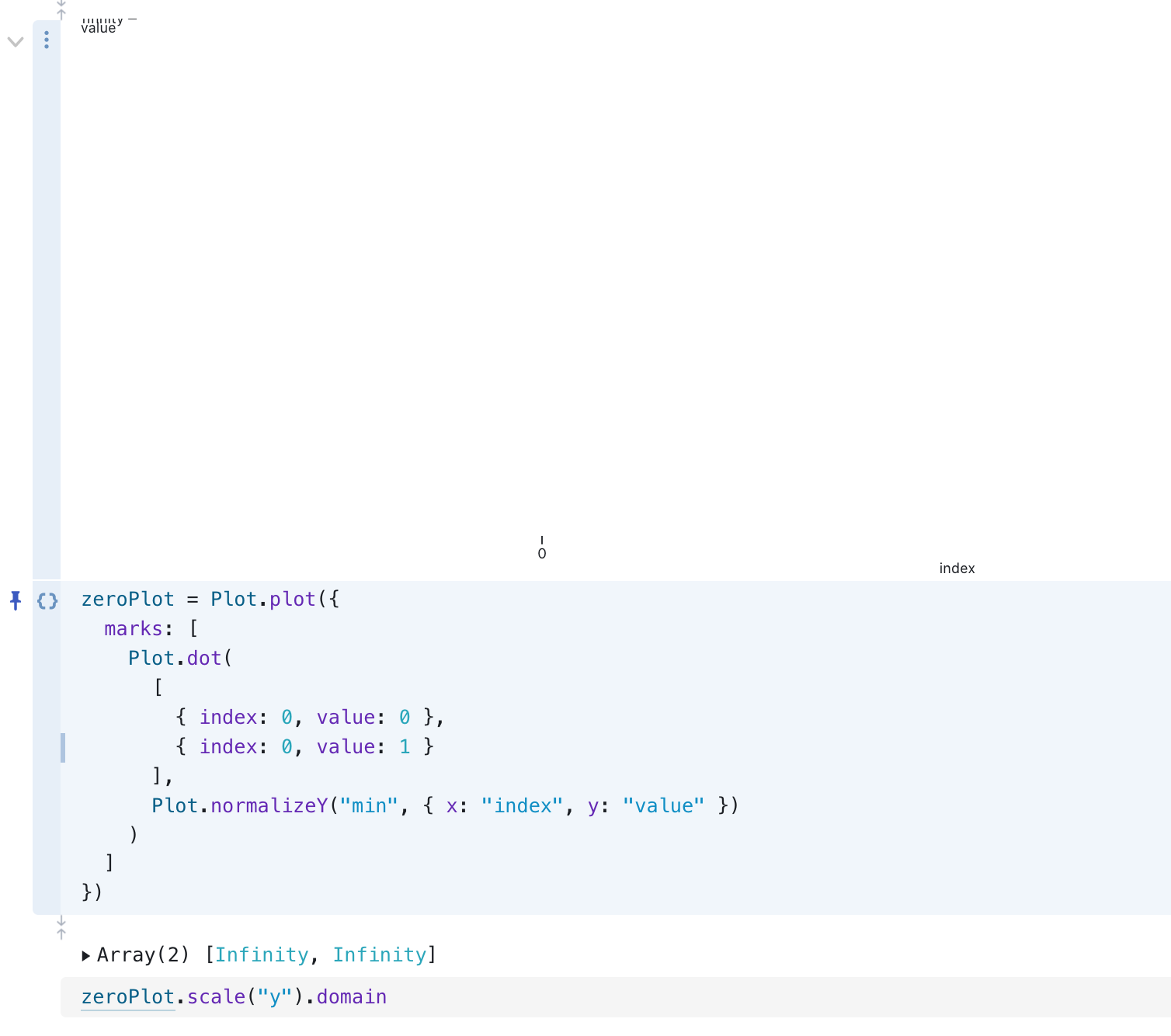-
Notifications
You must be signed in to change notification settings - Fork 197
Add normalize reducers min, max, deviation #603
New issue
Have a question about this project? Sign up for a free GitHub account to open an issue and contact its maintainers and the community.
By clicking “Sign up for GitHub”, you agree to our terms of service and privacy statement. We’ll occasionally send you account related emails.
Already on GitHub? Sign in to your account
Conversation
|
If you use the “deviation” basis, it means that you’re taking a set X = {x1, x2, x3, …} and mapping them to X′ = {x1 / d, x2 / d, x3 / d, …} where d = deviation(X). Is that what you expect? That seems surprising to me. I think that I would expect something more like {(x1 - m) / d, (x2 - m) / d, …} where m = median(X). |
There was a problem hiding this comment.
Choose a reason for hiding this comment
The reason will be displayed to describe this comment to others. Learn more.
max is a nice addition (make it fit!), and min is symmetric for negative values. We might also want to normalize by extent (box all the values between min and max). (EDITED: we already have extent)
I can also see the use-case for deviation, in particular with a fixed domain of, say, [-3, 3]. Agree with @mbostock, that it should be centered, but I'd argue for centering around the mean not the median, per the std dev definition.
Re: variance, unless there is a real world use-case that I don't know of, I don't think it's a good idea: the variance is not in the same unit as the original data, but in unit squared, so the normalized value of data in meters would result in values expressed in m^-1, which I think is very confusing.
|
I agree with Fil’s recommendations. |
|
Thanks for the review! I made the following changes:
|
|
The |
 mbostock
left a comment
mbostock
left a comment
There was a problem hiding this comment.
Choose a reason for hiding this comment
The reason will be displayed to describe this comment to others. Learn more.
Implementation looks good. 👍 Would you mind also updating the README, too?
src/transforms/normalize.js
Outdated
| const normalizeMedian = normalizeBasis((I, S) => median(I, i => S[i])); | ||
| const normalizeSum = normalizeBasis((I, S) => sum(I, i => S[i])); | ||
| const normalizeMin = normalizeBasis((I, S) => min(I, i => S[i])); | ||
| const normalizeSum = normalizeBasis((I, S) => sum(I, i => S[i])); |
There was a problem hiding this comment.
Choose a reason for hiding this comment
The reason will be displayed to describe this comment to others. Learn more.
Please preserve the trailing newline at the end of this file. 🙏
There was a problem hiding this comment.
Choose a reason for hiding this comment
The reason will be displayed to describe this comment to others. Learn more.
Updated (and preserved!). Let me know if you prefer a different phrasing or ordering (I left them as alphabetical, with extent and deviation at the end, as they follow a different pattern than those above)
README.md
Outdated
|
|
||
| The Plot.normalizeX and Plot.normalizeY transforms normalize series values relative to the given basis. For example, if the series values are [*y₀*, *y₁*, *y₂*, …] and the *first* basis is used, the mapped series values would be [*y₀* / *y₀*, *y₁* / *y₀*, *y₂* / *y₀*, …] as in an index chart. The **basis** option specifies how to normalize the series values. The following basis methods are supported: | ||
|
|
||
|
|
There was a problem hiding this comment.
Choose a reason for hiding this comment
The reason will be displayed to describe this comment to others. Learn more.
Now there’s an extra newline. 😂
There was a problem hiding this comment.
Choose a reason for hiding this comment
The reason will be displayed to describe this comment to others. Learn more.
Fixed 🤦
 mbostock
left a comment
mbostock
left a comment
There was a problem hiding this comment.
Choose a reason for hiding this comment
The reason will be displayed to describe this comment to others. Learn more.
👍
… all the points are equal, normalize to 0 instead of NaN.
01ea14f to
b3e4bf9
Compare
 Fil
left a comment
Fil
left a comment
There was a problem hiding this comment.
Choose a reason for hiding this comment
The reason will be displayed to describe this comment to others. Learn more.
I think it's normal to crash on min if the minimum is 0 (the max normalization will also give NaNs if the max is zero.)
For deviation, we can avoid a crash since in that case, all values are equal, and it makes sense to normalize the value to 0 (it will happen, for example, on a facet for which there is only one data point: better to show it that not).
I've added a few unit tests, and have decorated your commits with your actual email (instead of [email protected]).
In your terminal, you can do:
$ git config --global user.name "John Doe"
$ git config --global user.email [email protected]

Added four more reducers that can be set as the
basisforPlot.normalize:varianceSee this notebook for a demo.